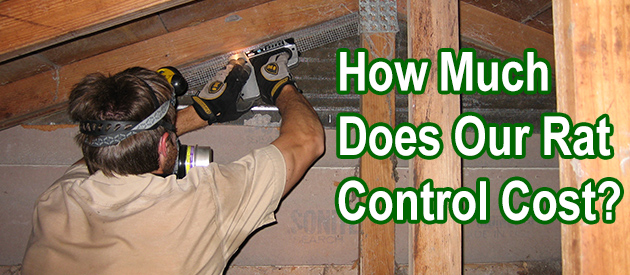Kanawha County, Charleston Rat Control Situation:
Hello David. I have a problem at my West Virginia home & not quite sure how to resolve it. I hear scratching noises between a wall in my house. I believe it's a rat. How do I get it out?
Thanks for your useful information about rat in the attic. I have tried to find and seal up all entry points as possible, but the rats still can get into the attic once in a while. You mentioned about vent, and I'm thinking about the roof splashing vent from the bathroom. There is big space under the "umbrella" covering the opening of the splash and I wonder if they can climb or jump up and get into the attic. Please advise. Thanks.
Hi David, I enjoy your website. It is very informative. I found your website after noticing a couple pieces of rat feces in the attic and, what looked like a hole burrowing down in the insulation. I got paranoid, and set a trap with peanut butter but have not caught anything in 4 days. I did not think there were any entry areas as our roof was just replaced a few moths ago, BUT after I did an inspection I did find what looked like a half-circle chewed where the wood meets brick. I couldn't believe it! I patched that with steel the next day and became paranoid there were other holes. After a complete roof inspection I found a couple gaps between brick and wood that could be entry points. I completely repaired/closed all entry points... My question is how long should I leave that trap in the attic if I haven't caught anything? I don't think that rat stayed in the attic???? Thanks again and very informative website!
My name is Julio and I am worried becuase I always hear running noises in my bedroom cieling. How do I get rid of these mice . Where should I look for holes ? Can I call an rodent exterminater. Thank for the article.
Charleston Rat Control Tip of The Week
Rat Damage In The Attic
Having rats in your attic is substantially more than only an irritation. These rodents can cause a lot of harm, mainly because they are generally social animals that live in groups. There is a chance of the rats in your attic putting your family in danger of getting a disease, and these animals will likewise cause physical damage to your attic.
Leaving Feces
The essential harm that rats will cause in an attic is leaving their waste products behind, especially excrement. Depending on the number of rats in the attic and how long they were there, there can be a significant measure of these waste products, requiring serious clean-up. In some cases, the urine may even drench into planks of flooring or other wood structures and compromise their integrity. At the very least, the urine and excrement will debase your attic, spreading illness and causing a foul smell. If you don't deal with this smell, it might attract more wildlife to the attic.
Chewing Wires, Pipes, Insulation, And More
Like mice, rats will bite on almost anything you have in your attic, regardless of whether it is a wire, funnel, or something else. Rats are famous for their gnawing behavior and will bite on anything in your attic. In the case of chewed wires, this can result in a serious fire hazard, especially if you don't know that the wire has been compromised. Rats may likewise damage your pipes and insulation from chewing. Without the insulation fit as a fiddle, your home won't manage temperature as effectively, making you spend more cash to run your cooling in the summer and heating in the winter. If you have anything stored in your attic, for example, books or old furnishings, you can expect these also to be damaged by rats. They will likely be chewed and may even end up covered in waste products.


